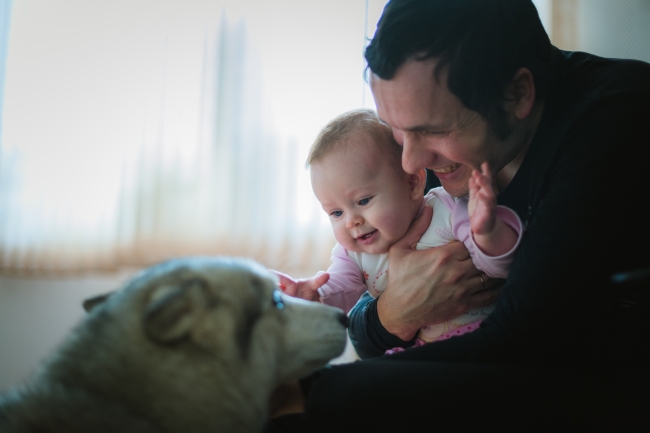The internet is strewn with articles about how to protect children from canine bites, or cat scratch attacks, but seldom are articles written about the threats children can pose to cats and dogs. This is for the simple reason that most of the damage children do to pets is minor, infrequent and usually unintentional. Children are small, generally harmless beings but even though kids are certainly well-intended most of the time, they can accidentally endanger animals. Because of this, adults have to take responsibility when it comes to taking care of both children and dogs under the same roof. Here are a few tips on what to watch out for and how to protect your dog or cat from children.
Tail pulling. This is the old classic. Tails wag, bounce and swing from side to side. The long fluffiness is incredibly fascinating to a kid, especially because the tail is usually at eye-level and conveniently within reach. A dog or cat might be snoozing on his pillow, contentedly eating his mid-day meal, or playing blissfully with your child, when suddenly his tail might be painfully yanked or pulled on direction. Not only will this hurt the pet, but it could incite him to retaliate in an unpleasant way.
Forceful petting and brushing. As all nurturing parents can attest, most children like to mimic what the adults do, whether it is carrying a child, mowing the lawn, or “playing house.” So it is no surprise that when you groom the dog or brush the cat, that a child would want to try his hand at the same skill. Oftentimes this can turn into repeatedly brushing the same area over and over, or combing too hard on the pet’s back. Some dogs and cats might dislike it so much that they will whip around and bark/hiss, or snap at the helpful little fingers. If your child is going to offer any assistance, make sure it is well-supervised.
Neck choking and hugging. Kittens and puppies are irresistible to adults, so imagine how a child must feel when he sees a little animal for the first time! Kids love to cuddle their toys, squeeze their teddies tightly, and it can be hard for them to see a distinction between the things they do with their pretend toys, and those with a living animal. What might feel like a sincere, heartfelt hug to your toddler could actually be slow strangulation to your cat.
Eye poking. Children (especially the small ones) are very curious, and often we catch them trying to poke or touch something that is unsafe, such as an electrical outlet, or a flickering candle, etc. If a child were to poke a dog’s eyes, it would not only be very painful but could potentially cause temporary blindness.
Pet Protection Tip: Because children love animals, and seldom realize that they might be agitating or hurting the pet, make sure you are present at all times when they interact. Something might be completely amicable and safe one minute, then hostile and defensive the next. When dogs and cats get hurt, they may lash out defensively, and can inflict pain on whoever is annoying them. Avoid these kind of interactions by always staying present, and by teaching your children the right way to address, approach, and handle domestic pets.

